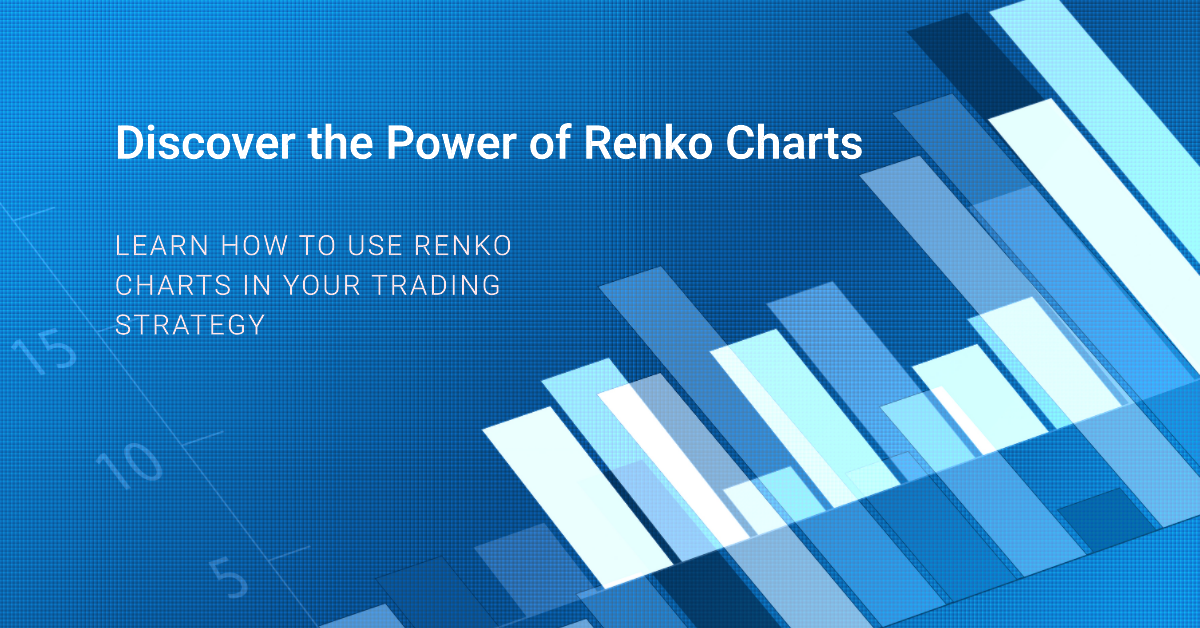| Key Takeaways |
|---|
| Renko charts provide a focused view on price movement. |
| Optimize trading strategies with effective brick size calculations. |
| Monitor S&P 500 for strategic trading decisions. |
| Understand support and resistance for informed trades. |
| Identify trends to maximize profitability. |
What is a Renko Chart?
A Renko chart comes from Japan. The key element of Renko is the focus on the price movement only. A Renko chart is comprised of a series of bricks. A new brick is formed after the price reaches and closes at a specific price amount. Another new brick is created and positioned at a 45-degree angle up or down. Typically, an up brick is green, and a down brick is red.
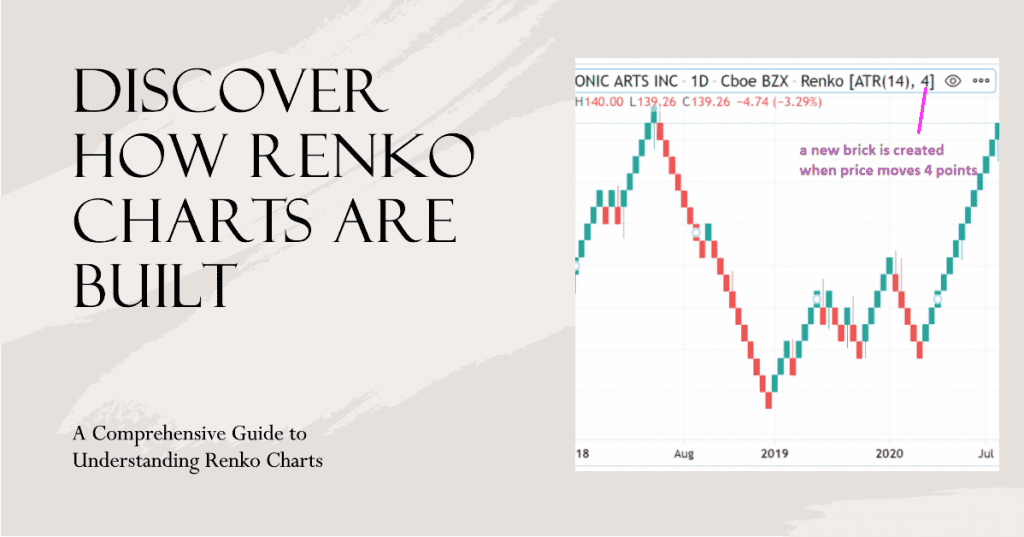
How is Renko calculated?
Let’s consider setting up a Renko chart for the SP 500 with a brick size of 10 points. In a 15-minute Renko chart, a new brick is added when the SP 500 closes either 10 points higher or 10 points lower every 15 minutes.
For instance, at 10 AM, the SP 500 is trading at 4100. By 10:15 AM, it’s at 4105. Since it only increased by 5 points, no new brick is added, and we continue to use 4100 as our reference. However, at 10:30 AM, the SP 500 is trading at 4075. Since this is 25 points lower than 4100, two new red bricks are added. The brick size is 10 points, so we create two bricks to represent this movement. From here, we use 4080 as the new reference point.
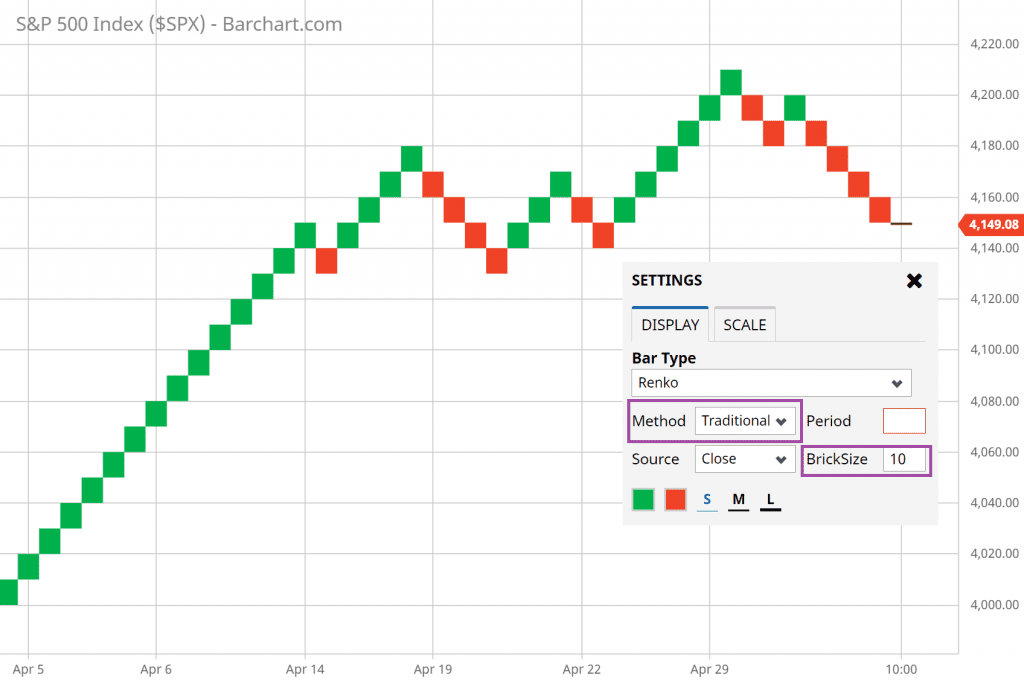
How are Renko brick sizes calculated?
Several methods are employed to determine the Renko brick size. One common approach involves utilizing a 14-period Average True Range (ATR). For instance, consider an SP 500 Daily Renko chart using ATR 14, indicating a value of 40. In this scenario, a new brick is generated when the price closes at least 40 points above or below the established basis at the end of each trading day.
For the S&P 500 Index, I opt for a fixed brick size approach, like 6 points or 10 points. Different assets call for varying settings; typically, it ranges from 1% to 2% of the current price for optimal results. However, when it comes to the S&P 500, using a traditional method is my personal preference. I often employ a trial-and-error approach until I discover a brick size that aligns well with my trading preferences and strategies.
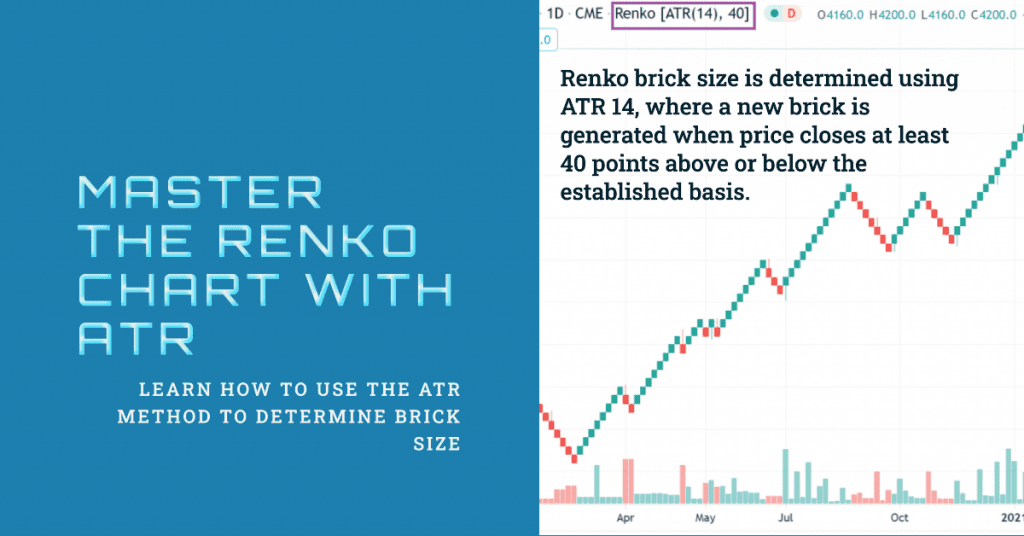
Which time frame is best for Renko chart?
Determining the optimal time frame for Renko charts primarily hinges on individual preferences and trading styles. Personally, I find the hourly and daily Renko charts particularly effective for analyzing the SP500. These time frames offer a balance between capturing meaningful price movements and providing a broader perspective, aligning well with my trading approach and enabling more informed trading decisions.
Does Renko Chart work?
In my experience, Renko charts have proven to be exceptionally effective in pinpointing crucial support and resistance levels, especially when compared to other charting methods. The beauty lies in how Renko charts make it simpler to detect trends, enabling traders to seize a significant portion of the trend’s movement and thereby optimize profits. Personally, I have found that utilizing Renko charts enhances my ability to interpret market trends accurately and make informed trading decisions, ultimately leading to more successful trading endeavors.
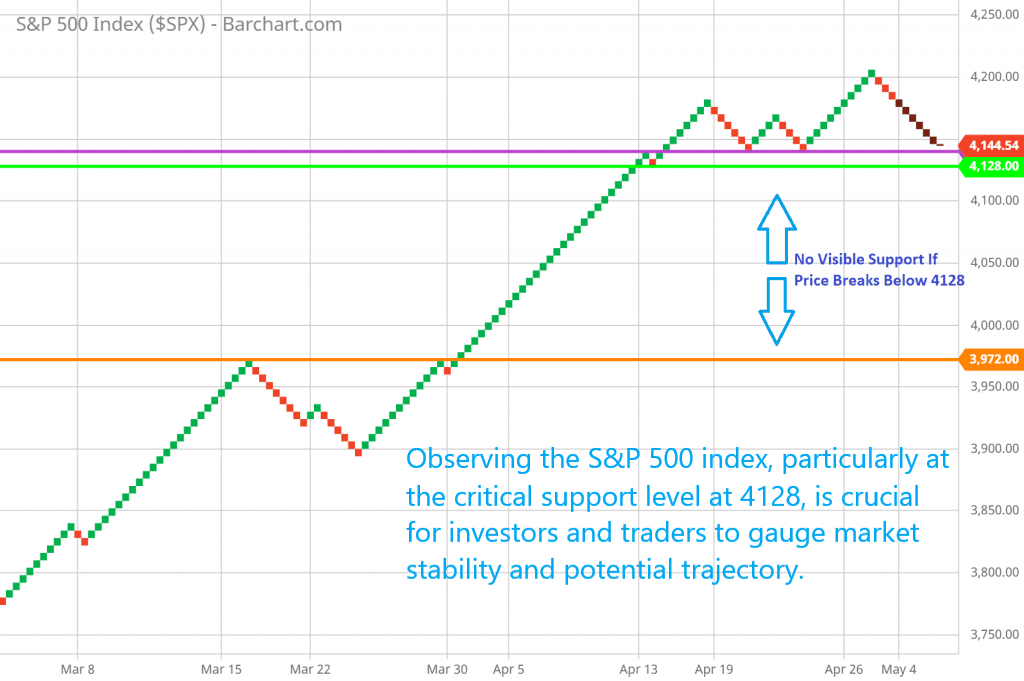
Monitoring the S&P 500 index is crucial, especially in light of the critical support level at 4128. If the index were to fall below this level, it could trigger a significant sell-off, potentially leading to a decline towards the 3,900 area. The intensity of the sell-off hinges greatly on the index’s ability to hold above this pivotal support. As an investor or trader, staying vigilant and closely observing the S&P 500 index is paramount, as it provides valuable insights into the market’s overall stability and potential trajectory. The stability above or below the critical support level is a key indicator of the market’s resilience and can significantly influence trading decisions.
